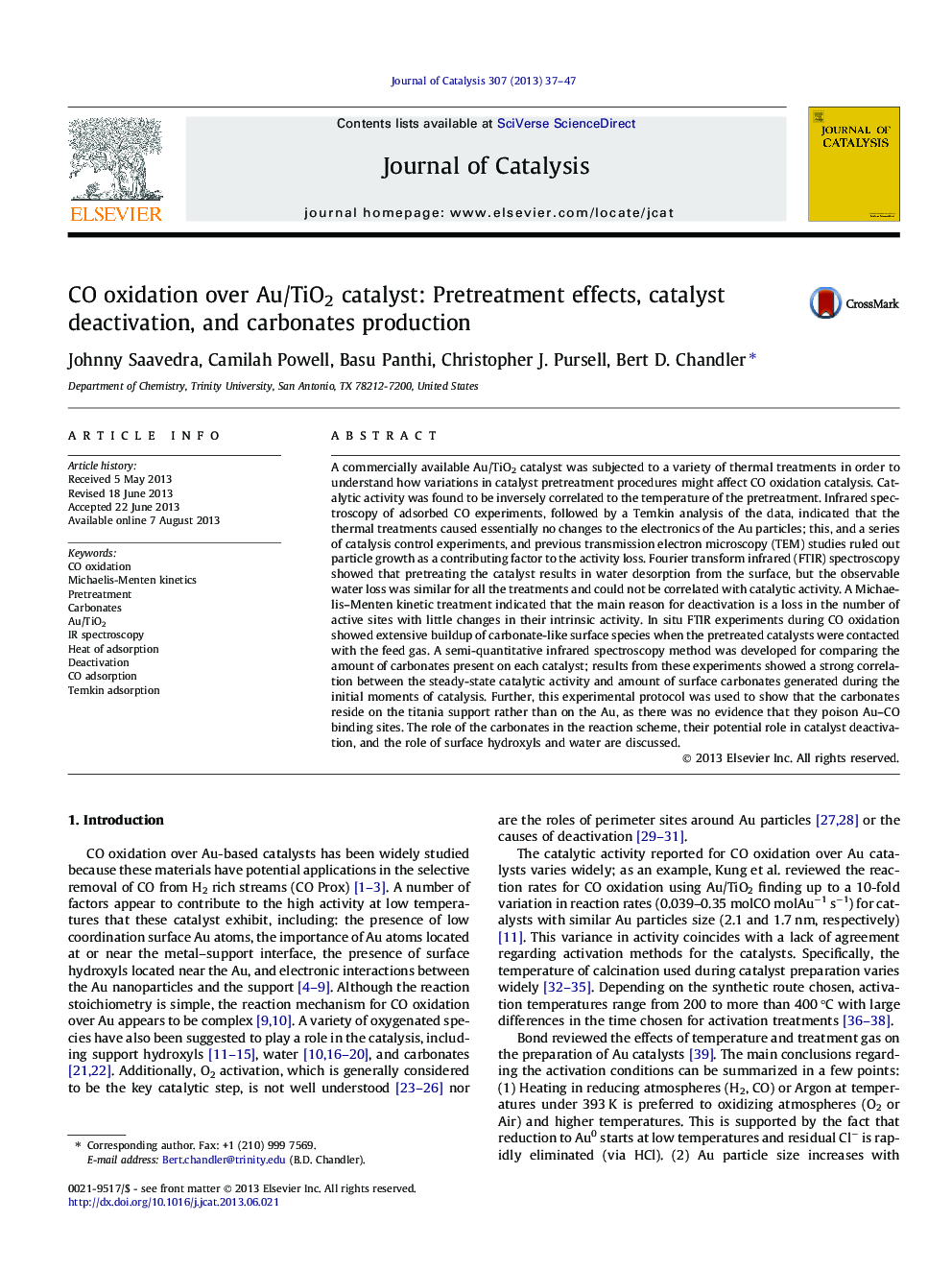| کد مقاله | کد نشریه | سال انتشار | مقاله انگلیسی | نسخه تمام متن |
|---|---|---|---|---|
| 61144 | 47567 | 2013 | 11 صفحه PDF | دانلود رایگان |

• Au/TiO2 CO oxidation activity diminishes as the pretreatment temperature increases.
• Pretreatments cause no sintering and do not substantially effect particle electronics.
• Active sites are lost as carbonates build up after contact with the reaction feed.
• Activity is inversely related to surface carbonates area.
• Surface carbonates reside on the titania support and do not directly poison the Au.
A commercially available Au/TiO2 catalyst was subjected to a variety of thermal treatments in order to understand how variations in catalyst pretreatment procedures might affect CO oxidation catalysis. Catalytic activity was found to be inversely correlated to the temperature of the pretreatment. Infrared spectroscopy of adsorbed CO experiments, followed by a Temkin analysis of the data, indicated that the thermal treatments caused essentially no changes to the electronics of the Au particles; this, and a series of catalysis control experiments, and previous transmission electron microscopy (TEM) studies ruled out particle growth as a contributing factor to the activity loss. Fourier transform infrared (FTIR) spectroscopy showed that pretreating the catalyst results in water desorption from the surface, but the observable water loss was similar for all the treatments and could not be correlated with catalytic activity. A Michaelis–Menten kinetic treatment indicated that the main reason for deactivation is a loss in the number of active sites with little changes in their intrinsic activity. In situ FTIR experiments during CO oxidation showed extensive buildup of carbonate-like surface species when the pretreated catalysts were contacted with the feed gas. A semi-quantitative infrared spectroscopy method was developed for comparing the amount of carbonates present on each catalyst; results from these experiments showed a strong correlation between the steady-state catalytic activity and amount of surface carbonates generated during the initial moments of catalysis. Further, this experimental protocol was used to show that the carbonates reside on the titania support rather than on the Au, as there was no evidence that they poison Au–CO binding sites. The role of the carbonates in the reaction scheme, their potential role in catalyst deactivation, and the role of surface hydroxyls and water are discussed.
For Au/TiO2 catalysts, pretreatment conditions were found to have a profound effect on the in situ production and/or stability of surface carbonates, which correlate with catalyst deactivation.Figure optionsDownload high-quality image (143 K)Download as PowerPoint slide
Journal: Journal of Catalysis - Volume 307, November 2013, Pages 37–47